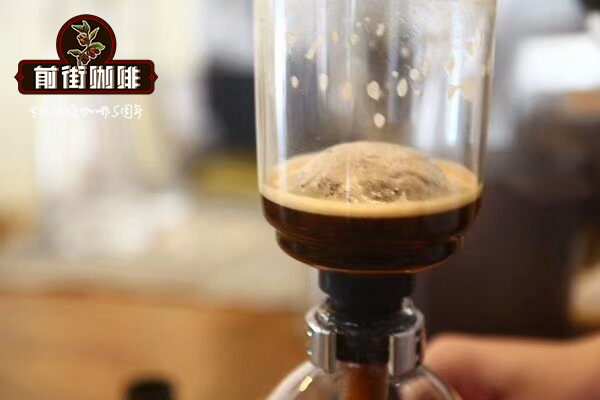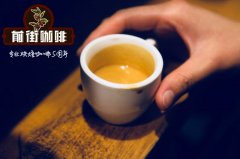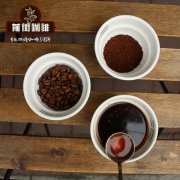The principle and operation of boiled siphon coffee (Siphon)

Professional coffee knowledge exchange more coffee bean information please follow the coffee workshop (Wechat official account cafe_style)
Siphon coffee maker
Siphon
Syphon
Vacuum pot siphon pot
two
History of siphon coffee maker
the Germans used glass to blow coffee pots in the early 1830s.
Patented styling of Berlin Loeff's design copied by French Richard
1935 French Boulang registered patent design
1937 patented design by Beunat, a person from Alsace, France
Frenchman Richard learned German technology and developed an all-glass siphon pot 1938 that applied for a patent in France.
three
Newspaper cartoons from the 1850s show Europeans' madness about siphon coffee
four
Elements extracted by coffee
water
water quantity
water quality
coffee powder powder quantity
particle size extraction temperature stirring degree extraction time
five
water
water quality
must not contain chloride ion
uses mineral water, not distilled water
The total solid content in water is better than that of 50--200ppm.
six
Coffee consumption
Coffee: water = 1RU 12 Mustco 1MU 20
common coffee ladle, each flat full ladle, about 7 Murray 11g coffee ripe beans (depending on roasting degree, coffee bean density)
recommended amount of powder / water: one flat ladle of coffee cooked beans per 120cc
seven
Coffee powder quantity
coffee contains chemicals with different solubility.
With the progress of extraction time, different components of dissolve out one by one.
The first component of to be dissolved and extracted is meta-acid.
The final dissolved component in the soluble components of is partial.
Bitterness
The appropriate extraction amount of is to extract the ingredients from coffee granules by 18%-22%, which can reach the composition that most people like.
The concentration of coffee is 1.15% and 1.35%, which is considered by most people to be moderate.
eight
Coffee granule size
coffee granule shape
The permeability of is uniform, and the extraction average cube is the best.
coffee granule size
American Code 20 standard sieve
square aperture 0.84mm
nine
Coffee particle size and coffee taste
ten
Extraction temperature and taste of coffee
Slightly stronger
Moderate
Strength degree
Medium and weak
Weak
Acidity, astringent taste, consistency, irritation.
eleven
Extraction temperature
is to balance and stabilize the strength, taste, aroma and concentration of coffee.
recommends that the extraction temperature of siphon pot coffee is 90-92 °C.
twelve
Stir
destination
moistens the coffee particles.
squeezes the coffee dissolved matter away from the coffee particles.
Stirring Source of siphon Pot
flow (turbulence) agitation manual agitation
thirteen
Stirring source of siphon pot (1): current agitation
fourteen
Flow control
uses the regulation of the firepower of the gas furnace to adjust the boiling degree of the residual water in the lower pot, so as to control the generation of steam, and then control the degree of agitation of the water flow in the upper pot.
uses stable firepower to produce stable steam, provides stable stirring, and stabilizes the extraction of coffee.
fifteen
Siphon pot stirring source (2): stir the by hand and use the stirring stick to stir the coffee powder in the upper pot.
The opportunity and purpose of manual stirring of
After pour the powder into the pot
○ soaks the coffee powder as soon as possible and moistens evenly.
○ suggested that after heating the lower pot and rising to the upper pot, adjust the firepower to keep the water from the upper pot from falling back to the minimum firepower of the next pot, let the water temperature stabilize for 60 seconds, and then pour the powder to make the extraction conditions stable.
Before the end of extraction
○ squeezes the dissolved coffee liquid away from the coffee particles
○ uses the principle of centrifugal force to shake the dissolved coffee liquid away from the coffee granules. The greater the centrifugal force, the easier it is to throw it out, and the more it comes out.
sixteen
Extraction time
In the process of extraction, the soluble substances of coffee were dissolved one by one with time according to their different solubility.
The coffee ingredients dissolved by appear acid, acid, bitter, bitter in the following order
suggested that the extraction time should be controlled between "sour bitterness", so as to make coffee have the variability brought by "acid".
The irritation of coffee brought by the "sour" of
The representativeness of coffee brought by "bitterness"
seventeen
Extraction time controls the removal time of fire source
The change of pressure gradient
In the process of heating, the closed lower pot is produced by water vapor, which forms a positive pressure higher than atmospheric pressure, and extrudes the water into the upper pot.
After the fire source is removed, the volume of the closed lower pot is reduced due to the condensation of water vapor, forming a negative pressure lower than the atmospheric pressure, and the water is sucked back into the lower pot.
The change of temperature gradient
When the water from the upper pot of is sucked back to the lower pot, it is encountered that the temperature of the heating part of the fire source at the bottom of the lower pot is higher than that of the upper pot, resulting in lower heat and upper cold.
Upward (reverse) temperature gradient, slow down the speed of suction and prolong the time of extraction
controls pressure and temperature gradients
wet cloth covers the upper part of the lower pot, lowering the temperature in the lower pot, accelerating the condensation of water vapor, accelerating the generation of negative pressure, and increasing the pressure difference.
then touches the heating part of the fire source with a wet cloth to lower the temperature of the glass and make it lower than the water temperature of the upper pot, resulting in a downward (positive) temperature gradient of cooling and heating under, together with the pressure gradient, the water from the upper pot is dragged back to the lower pot.
The greater the negative pressure of , the greater the downward temperature gradient, the greater the suction force, and the shorter the extraction time 18.
Control of coffee taste (body)
is caused by using filter cloth or filter paper to absorb the fiber and oil of filtered coffee.
Coffee lacks taste (body)
reduces filtered fibers and oils to improve the taste of coffee.
Filter mechanism of siphon coffee pot filter cloth / filter paper
coffee powder
nineteen
Siphon coffee pot filter controls the pore size of filter cloth / filter paper
As long as does not let the powder fall back into the pot, the bigger the better, the better the fastening degree of the filter ring.
As long as doesn't let the powder fall back into the pot, the looser the better.
coffee powder
tries not to filter coffee powder.
through manual stirring, the process of producing centrifugal force, so that the powder concentrated in the center of the filter ring, resulting in ice cream spherical structure, can reduce the filtration effect of powder.
twenty
Ice cream coffee powder
twenty-one
Field demonstration
Important Notice :
前街咖啡 FrontStreet Coffee has moved to new addredd:
FrontStreet Coffee Address: 315,Donghua East Road,GuangZhou
Tel:020 38364473
- Prev

Would you like to know something about Philharmonic pressure? What is love pressure?
Professional coffee knowledge exchange more coffee bean information please follow the coffee workshop (Wechat official account cafe_style) Philharmonic pressure to know? What is love pressure? AeroPress is a simple instrument for making coffee by hand. Overall, its structure is similar to that of a syringe. When in use, put ground coffee and hot water into the syringe, then press and push.
- Next

Introduction to the standard of coffee extraction in pressure pot
Professional coffee knowledge exchange more coffee bean information please pay attention to the coffee workshop (Wechat official account cafe_style) pressure extraction of coffee powder, or through soaking, but if only that, why should it be referred to as legal pressure, and should not be called legal filtration? (this statement is not accurate, some bosom friends have pointed out in the comments, but my core view remains the same. (French filter press, press
Related
- What is the Philharmonic pressure? How to use Philharmonic pressure to make delicious coffee
- Why does a hand grinder have more fine powder than an electric grinder?
- In addition to the hot mom, what is the difference between the versions of EK43 | ditting and Mahdi ek43?
- What kind of equipment do you need to make coffee by hand? Introduction to novice starter cooking equipment tools
- Espresso needs to be ground how thick and thin scale entry Italian Coffee Machine Bean Grinder investigation and Grinding course
- How much does it cost to open a small private cafe? How much does it cost to learn coffee? How to operate it?
- The difference between the flavor characteristics of hand-brewed coffee and coffee maker is hand-brewed coffee really better than coffee maker? Can I use a coffee machine to make coffee beans by hand?
- The difference between 01 and 02 of hario v60 filter cup what is the difference between 01 and 02 filter cup opening and cooking flavor
- What's the difference between the smart cup and the French kettle? Which is better, the French kettle or the Smart Cup?
- What's the difference between a smart cup and a V60 filter cup? The difference between the taste of smart cup and hand-brewed coffee

